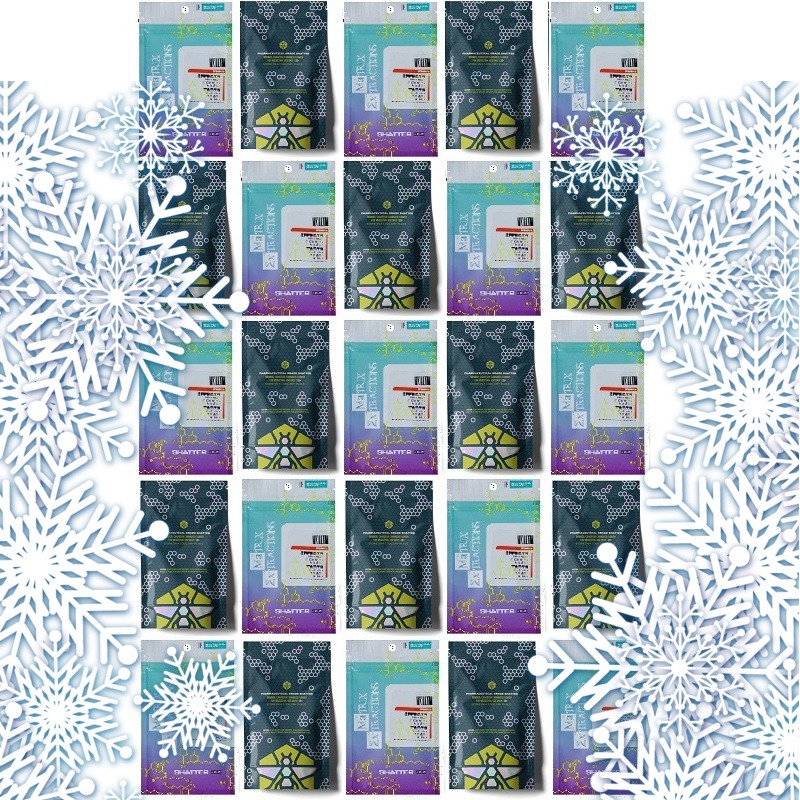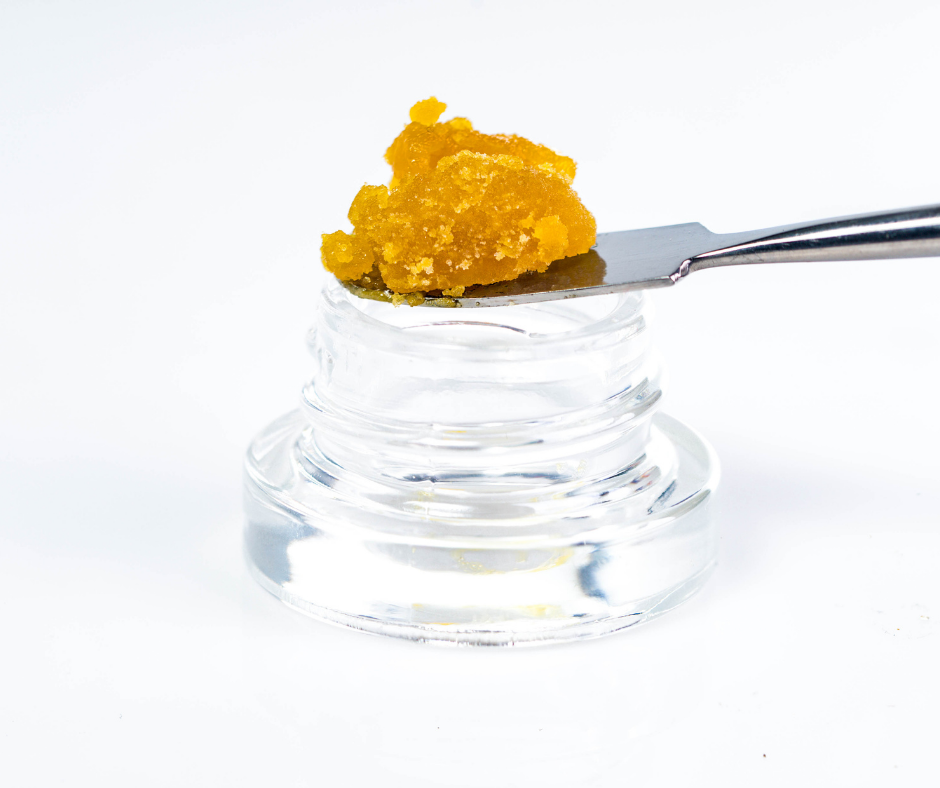Mom Dispensary
Cannabis Concentrates Explained Part Two
Welcome back to the second in our two-part series breaking down cannabis concentrates. In the first part, we talked about what a concentrate is and the difference between sauce, diamond extracts, wax, and THC distillate. You may be thinking, “how many different types of cannabis concentrates could there possibly be?” Well, that’s why we brought you back for a part two friends! That was just the tip of the iceberg. Now that we’ve refreshed your memory, let’s get right back into it and learn a bit about shatter.
Shatter
 One of the purest concentrates on the market, shatter is extracted using the BHO, also known as the Butane Hash Oil method. Butane is a solvent that is used to help extract the THC from the marijuana flower. Since the solvent needs to be eliminated from the final product before it is safe for consumption, this method is not safe for the DIY’ers. Shatter get’s its name from the shiny, glass-like texture that it takes in its final form. It tends to have an opaque amber colour that is greatly determined by the structure of the compounds in the originating flower. Its brittle texture can make it difficult to work with making shatter a good candidate for use in dabbing, vaping, and bongs.
One of the purest concentrates on the market, shatter is extracted using the BHO, also known as the Butane Hash Oil method. Butane is a solvent that is used to help extract the THC from the marijuana flower. Since the solvent needs to be eliminated from the final product before it is safe for consumption, this method is not safe for the DIY’ers. Shatter get’s its name from the shiny, glass-like texture that it takes in its final form. It tends to have an opaque amber colour that is greatly determined by the structure of the compounds in the originating flower. Its brittle texture can make it difficult to work with making shatter a good candidate for use in dabbing, vaping, and bongs.
Live Resin
Unlike most other concentrates, the main characteristics of live resin are defined by the characteristics of the originating plant more than the extraction process. While most concentrates are extracted from dried or cured flowers, live resin is extracted from fresh, flash-frozen plant material. This process locks in more of the volatile terpenes and cannabinoids that would be lost during the drying or curing process. Another defining characteristic of live resin is the use of lightweight hydrocarbons that allow for a cold extraction versus a heat-based extraction. These processes all help preserve terpenes, making live resin flavourful, smooth, and aromatic. Overall, the process is very technical and requires a lot of specialty equipment so you’re better off purchasing your resin from a dispensary rather than trying to make it yourself. Live resin is best consumed through dabbing or vaping but it can also be broken down and sprinkled on a joint or bowl.
CBD Distillate
While many users of cannabis concentrate enjoy the accompanying high that comes with the THC content, some are interested in cannabis products solely for their therapeutic benefits. This is where CBD distillate or CBD oil can come into play. Much like a THC distillate, a CBD distillate is stripped of all other materials except for specific cannabinoids and is void of any taste or smell. Unlike a THC distillate, CBD distillate is extracted from the hemp flower. This concentrate is typically used for its pain-relieving qualities giving more of a body buzz than a high. Not only is it used for pain relief but many people use it to relieve stress and anxiety as well. Like any oil or distillate, CBD distillate can be vaped, applied topically, or used to make edibles.
Kief
You may have noticed a powdery substance that connects at the bottom of your grinder after a while. This powder is a powerful concentrate called kief which consists mainly of pure trichomes (the opaque white crystals that form on each plant bud). Kief can be collected and sprinkled onto a joint, or you can coat a bud with it before smoking a bong.
Now that we have given you all the different forms that a cannabis concentrate can take, you may be feeling a little confused about all the different ways you can use them. You may be wondering what is a bowl and how does one dab? Let’s break down the various methods that you can use to consume these products.
Vaping
Vaping is something that has grown in popularity in recent years due to its ease of use, the variety of products you can vape, and how discreet it is. You may have noticed that most of the cannabis concentrate items we have talked about can be used in a vape. A vape heats your cannabis product to just below 190 degrees. This turns the cannabinoids and terpenes to vapor that you inhale. This method activates these compounds without burning them off like smoking a joint, making them more potent.
Dabbing
Dabbing is another method that refers to applying heat to a concentrate to create smoke that is then inhaled. Typically, dabbing is done using a glass bong-like instrument called a dab rig or oil rig. This method delivers a potent high, and flavourful experience, much like vaping.
Joints
If you are accustomed to smoking a joint, worry not because many of your favourite concentrates can be added to your joint. Whether it’s a more solid texture that can be crumbled up and sprinkled onto your joint or something like wax or resin that you can spread on or coat your joint with.
Bongs
Much like a joint, a bong can also be used creatively to partake in concentrates. Typically used to smoke buds, a bong can be used to smoke a bud that is coated in concentrates like wax or resin and rolled in kief.
Now that you are well versed in the many different forms cannabis concentrates can take, how they are made, and how to use them, it’s time to put this knowledge to work for you. The next time you go to your dispensary, you won’t feel like a total amateur. One thing that is important for you to take away from this series is that cannabis concentrates are highly potent, no matter what form they take. So use with caution. Even if you are a veteran pot smoker, a concentrate hits differently, so start small and see how your body reacts. Think of cannabis concentrates as the hard liquor of the cannabis world. You likely aren’t going to react the same to 5 shots of tequila that you do to 5 beers. Concentrates hit harder, so use but use responsibly and remember, you are ganja have a good time!
* * All views expressed here are from a third-party source and do not necessarily represent the entity of Salish Trails itself. This blog post is intended to be used for informational purposes only.

